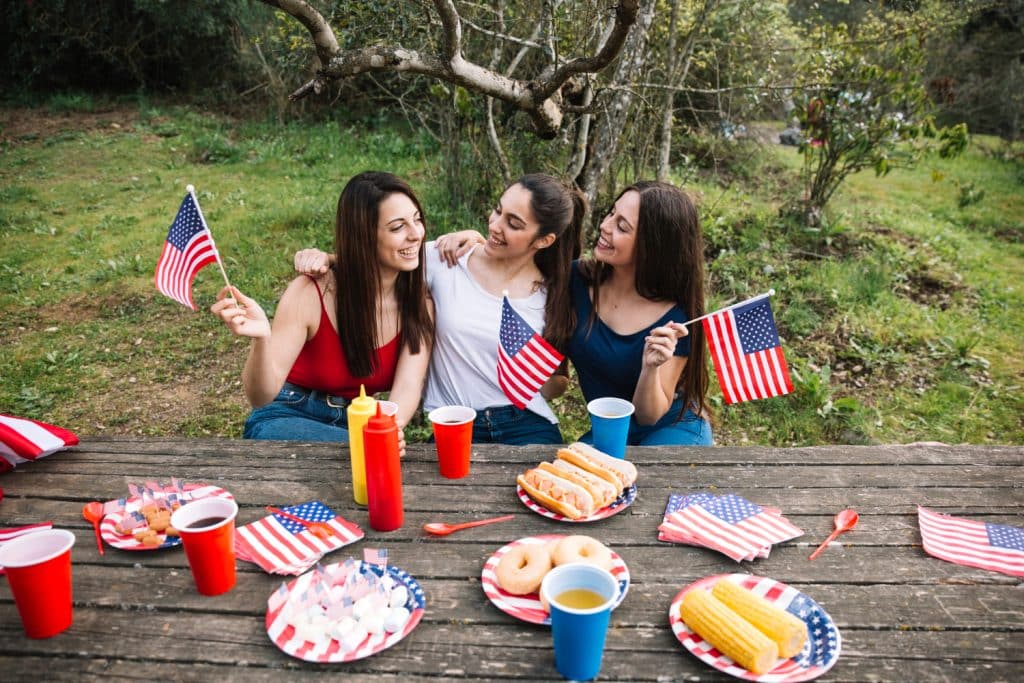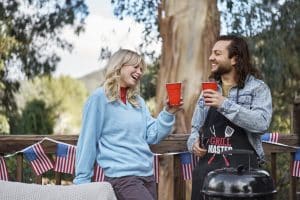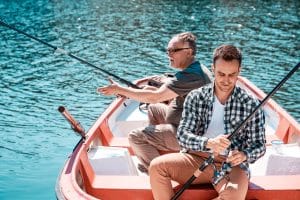Summer in America: A Complete Guide to Seasonal Activities and Traditions Across 50 States

The Importance of Summer in American Life
Summer holds a special place in American culture. It is a season that signals both freedom and tradition. For many, it marks the end of the school year and the beginning of vacations, outdoor gatherings, and a slower pace of life. Families often cherish this time to reconnect during road trips, backyard barbecues, and evenings spent watching fireworks or lightning bugs.
Regional Diversity in Summer Experiences
The way Americans experience summer changes greatly across the country. In the Northeast, cool ocean breezes offer relief from city heat while families flock to the coast for clambakes, sailing, and seafood festivals. Urban areas become hubs of activity with street fairs and rooftop gardens. Meanwhile, the Southeast embraces the season with open arms despite the humidity, welcoming locals and visitors alike to porch swings, sweet tea, and vibrant food festivals.
The Midwest brings its own traditions with sunny days spent on the Great Lakes, as well as county fairs that highlight local agriculture and community spirit. Out west, the Rocky Mountains and desert regions create opportunities for hiking, mountain biking, and star-filled nights around a bonfire. Each location adapts to the season’s warmth and daylight in its own way.
Celebrations and Traditions Across the Country

Americans celebrate summer with a variety of traditions that tell the story of their communities. Independence Day on July 4th stands out as the most widely observed holiday, often featuring parades, fireworks, and patriotic gatherings. Yet, other unique events fill local calendars–from music and food festivals in coastal cities to agricultural fairs in rural landscapes. Water-based activities are a summer staple, whether it is surfing on the Pacific, fishing in the Midwest, or enjoying lakes and rivers across the country.
These celebrations bring neighbors together and create lasting memories. Summer in America is not just a period between spring and fall—it is a season rich in experiences, shaped by geography and history alike.
As the country transitions from coast to heartland and onward, each region’s take on summer weaves a vibrant tapestry of American life.
Northeast Summer Traditions
Coastal Culture and Classic Activities
The Northeast offers a tapestry of summer experiences deeply connected to land and sea. In New England, the coastline comes alive with age-old gatherings. Traditional clambakes—where shellfish, corn, and potatoes steam together atop seaweed—are central to summer in this region. Both casual family events and community festivals often center around this meal, which connects people to local maritime heritage. Sailing is another cornerstone of the New England summer, with countless small harbors hosting regattas and recreational outings. Boat parades and maritime festivals blend competitive spirit with a sense of nostalgia, as wooden sailboats and modern vessels glide past one another.
Festivals centered around the sea are also widespread. Towns hold seafood festivals, featuring fresh catches and live music, where visitors and locals alike celebrate the ocean’s bounty. Along the rocky shores, families stroll boardwalks dotted with ice cream shops and arcades—timeless scenes that evoke seaside summers of the past.
Vibrant Urban Summers
Metropolitan areas such as New York, New Jersey, and Pennsylvania experience summer in a different, but equally vibrant, way. Street fairs wind through city neighborhoods, offering local food, artisanal crafts, and live entertainment. These events encourage neighbors to mingle and transform city spaces into festive gathering spots. Rooftop gardens are another beloved feature, especially in densely populated cities. High above the bustle, people enjoy community gardens, outdoor libraries, and art installations—all with sweeping skyline views.
Urban parks become stages for open-air concerts, farmers’ markets, and outdoor movie nights. These activities are accessible escapes from the heat, blending leisure with the unique rhythm of city life. Summer draws people outdoors—from riverside communities along the Hudson to historic corners of Philadelphia—where local history and contemporary culture meet.
Honoring Historical Roots
Throughout the region, many traditions reflect the Northeast’s historical significance. Celebrations often mark Revolutionary War anniversaries and other historical milestones. Parades, reenactments, and fireworks displays honor the deep roots of American independence found in this part of the country. These traditions help foster a strong sense of place and identity each summer, grounding the season’s joys in stories that have shaped the nation.
As temperatures climb and daylight stretches, the Northeast blends nostalgia, culture, and community into a distinct summer experience enjoyed by both residents and visitors.
Southeast Summer Culture
Embracing Summer with Southern Hospitality
The southeastern United States is known for its warm weather, hearty traditions, and a hospitality that defines the region’s summer spirit. As temperatures rise, communities adapt by gathering on shaded porches, sipping sweet tea, and enjoying cool afternoons beneath grand oak trees. Neighbors often come together for outdoor meals, picnics, and cookouts, where barbecued meats and garden-fresh produce are staples. Whether in small towns or bustling cities, a genuine sense of connection is always present, making summer a season for sharing and fellowship.
Water Adventures Along the Coast
Life in the Southeast revolves around water, especially during summer. The Atlantic coastline and the Gulf of Mexico invite families and friends to sandy beaches, where swimming, sunbathing, and building sandcastles are must-do activities. Boating and fishing are more than just pastimes—they’re part of local heritage in places like the Florida Keys and the Outer Banks of North Carolina. Jet skiing, paddleboarding, and wildlife watching are popular pursuits on both the coast and along rivers that twist through the region. These aquatic adventures offer a welcome break from the heat and create shared memories that last long after summer ends.
Celebrations and Culinary Traditions
Summer in the Southeast is also a time for colorful festivals and time-honored food traditions. Cities and small towns alike celebrate with music festivals, craft fairs, and lively street parades. In Louisiana, crawfish boils bring people together for spicy seafood and conversation. In Georgia and South Carolina, fresh peaches are turned into pies, cobblers, and ice-cold treats. Fried green tomatoes, boiled peanuts, and homemade ice cream fill picnic tables and fair booths from Texas to Virginia. These dishes highlight the region’s agricultural bounty and deep culinary history.
As the Southeast celebrates summer with its signature warmth and flavor, other regions across the country reveal their own seasonal customs and traditions, each contributing to the nation’s diverse experiences.
Midwest Summer Experiences

Great Lakes Summer Activities and Maritime Traditions
The Midwest’s summer identity is shaped by its vast freshwater lakes. The Great Lakes region, including Michigan, Wisconsin, and parts of Illinois, becomes a hub for water-based recreation every summer. People flock to lakefront beaches to swim, sunbathe, and build sandcastles. Boating, kayaking, and sailing are prized pastimes, and many families own or rent cabins along the water’s edge.
Fishing is a central tradition, with early mornings spent casting lines for perch, bass, or walleye. Ports host lively regattas and boat parades, where spectators admire old-fashioned schooners and contemporary yachts. Lighthouses attract visitors with their history and provide picturesque settings for picnics and summer evenings.
Agricultural Celebrations and County Fairs
Summertime in the Midwest also brings a showcase of agricultural heritage. Farmlands stretch across states like Iowa, Nebraska, and Ohio, where county fairs become the highlight of the season. Residents show off livestock, homemade jams, and handstitched quilts. These fairs mix competition and celebration, offering tractor pulls, pie-eating contests, and talent shows.
Food is a cornerstone of these gatherings. Sweet corn roasted over open fires, funnel cakes dusted in powdered sugar, and ice cream churned by hand serve as classics. Midwesterners also savor fresh produce, especially tomatoes, cucumbers, and berries recently picked from local fields.
Family-Oriented Summer Traditions in Midwestern Communities
Summer here is a time for togetherness and family memories. Communities host free outdoor concerts and movie nights in local parks. Many towns organize parades for Independence Day, culminating in fireworks that light up the evening sky.
Camping is a favorite tradition, whether it’s in a backyard tent or a state park surrounded by forests. Neighborhood block parties and barbecues foster close-knit bonds, with games like cornhole and horseshoes taking center stage. Kids catch fireflies, ride bikes, and enjoy the freedom of long days outdoors.
The Midwest’s summer traditions reflect a strong sense of community, balancing outdoor adventure with simple, enduring pleasures.
Western Mountain and Desert Summers

High-Altitude Adventures in the Rockies
Summer in the Rocky Mountain region offers a refreshing escape from the heat through its cooler alpine climates and abundance of outdoor activities. Elevation brings crisp air perfect for hiking, mountain biking, and climbing. Families and thrill-seekers head to spots like Colorado’s Estes Park or Wyoming’s Grand Teton area for scenic trails and breathtaking vistas. Evenings often bring community gatherings and outdoor concerts in small towns surrounded by wildflower meadows. The region is also known for lakes and rivers ideal for kayaking or fishing. Campgrounds fill with both locals and tourists eager to reconnect with nature and unplug in quiet mountain settings.
Desert Summers: Tradition and Adaptation
Desert communities across states like Arizona, Nevada, and New Mexico adopt unique strategies to cope with extreme heat. Activities shift to early mornings or evenings when temperatures are more bearable. Locals often embrace water-based fun in city splash parks, or head to rivers such as the Colorado for tubing and swimming. Time-honored traditions include desert night markets, open-air movie screenings, and festivals celebrating local culture beneath clear, starlit skies. Architecture designed with deep porches and shaded courtyards provides relief during the hottest hours. Many families also drive north to higher elevations for day trips, making the most of nearby cooler mountain air.
Exploring National Parks and Untamed Wilderness
The Western states are home to some of the nation’s most iconic national parks and wilderness areas. Summer is peak season for exploring the dramatic landscapes of places like Yellowstone, Zion, and Arches. Visitors can hike among towering rock formations, observe wildlife, or simply enjoy the solitude of remote backcountry trails. Rangers offer educational programs to connect people with the region’s natural beauty and history. Travel within these parks often rewards explorers with unforgettable sunsets, stargazing opportunities, and the vibrant colors of mountain and desert blooms.
The coming chapter will highlight how summer along the Pacific Coast creates a backdrop for beach traditions, creative festivals, and a lifestyle closely tied to the ocean and outdoor living.
Pacific Coast Summer Culture
Beach Culture and Coastal Traditions
From the golden sands of Southern California to the rocky shores of Washington, the Pacific Coast is defined by its deep connection to the ocean. Summer days are often spent at the beach partaking in classic activities like surfing, volleyball, and sandcastle building. Lifeguard towers and colorful beach umbrellas dot the horizon, signaling a laid-back lifestyle that values time outdoors. Coastal towns bustle with local seafood markets, and communities regularly organize beach clean-up events that highlight environmental stewardship.
Local traditions run deep in coastal life. Bonfires on the beach are a favorite way to end the day, with people gathering for music, storytelling, and s’mores. In some areas, tidepool exploration draws families and school groups who marvel at the unique marine life found only at low tide. Whale watching is also an iconic activity, especially in places where migration routes pass close to shore.
Unique Summer Festivals and Celebrations
The West Coast is home to a vibrant lineup of summer festivals, each reflecting the diversity of the region. In Southern California, outdoor music events and street art festivals fill city blocks, and communities like San Francisco host elaborate Pride celebrations and cultural parades. Further north, city neighborhoods in Portland and Seattle come alive with summer food fairs, featuring local produce and innovative cuisine.
Small towns along the coast celebrate with quirky, locally-inspired gatherings. For example, sand sculpture contests and wooden boat festivals showcase the creativity and maritime heritage of Pacific communities. These events often include live performances, artisanal crafts, and activities welcoming all ages.
Outdoor Lifestyle and Recreation Opportunities
The Pacific Coast’s natural setting shapes a distinct summer lifestyle. Whether it’s an early morning run along seaside paths, bicycling through forested parks, or hiking bluffs overlooking the Pacific, outdoor recreation is woven into daily routines. The proximity to both the ocean and mountains offers a wide range of activities from paddleboarding and kayaking to mountain biking and backpacking.
Community parks and public spaces see daily use for picnics and outdoor yoga classes. Farmers’ markets thrive each weekend, highlighting the importance of fresh, local food in the coastal diet. The mild coastal climate allows for these pursuits, making the outdoors a central feature of summer life in this region.
As summer unfolds, the Pacific Coast continues to inspire traditions and activities rooted in a sense of place and an appreciation of the outdoors.
Alaska and Hawaii: Summer in America’s Non-Contiguous States

The Midnight Sun of Alaska
In Alaska, summer transforms daily life with the phenomenon known as the midnight sun. Above the Arctic Circle, daylight can last nearly 24 hours. Locals and visitors take advantage of the extended daytime, enjoying outdoor adventures at any hour. Activities range from hiking along vast trails to fly-fishing in clear rivers, all while surrounded by untamed wilderness. Community events celebrate the never-ending daylight. For example, the city of Fairbanks hosts nightless baseball games, marathons, and festivals beneath a sky that stays light until midnight. Many Alaskan towns hold summer solstice gatherings, where people share food, music, and stories well into the early hours.
Berry picking is a cherished seasonal ritual. Families head out to pick wild blueberries, salmonberries, and cloudberries. Cookouts, with freshly caught salmon grilled over open flames, bring communities together. Summer also means wildlife spotting: moose, bears, and caribou are more visible, as are migratory birds that join the landscape for their brief Arctic summer stay.
Hawaiian Summer Traditions
Hawaii’s summer combines indigenous customs with modern celebrations. Native Hawaiian festivals often center on ancestral practices like hula dancing and traditional games. The annual King Kamehameha Day parade features flower-laden floats, marching bands, and riders in feather capes, honoring one of Hawaii’s most significant historical figures.
Summer is also lei season. Making and gifting colorful leis is a symbol of welcome and friendship, and many families gather to weave intricate garlands from plumeria, orchids, and ti leaves. Surfing and outrigger canoe paddling are popular pastimes that connect present-day islanders to age-old maritime skills.
Local food is another highlight. Summer brings mangoes, lychee, and fresh-caught fish, celebrated in street fairs and night markets. Island-style barbecues called pā‘ina feature kalua pork, poke, and shaved ice.
Uniqueness of Alaska and Hawaii’s Summer Experiences
Alaska and Hawaii stand apart in their summer celebrations and daily life. From the sun that nearly never sets to the reverberations of Pacific drums and chant, these states offer distinctly American, yet singular, ways of experiencing the season. Their traditions, shaped by geography and culture, show how summer in the United States can be both familiar and wonderfully unique.
